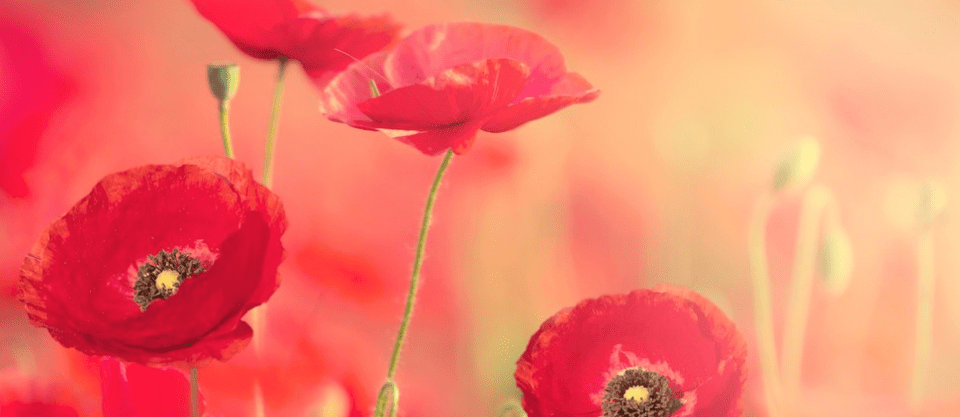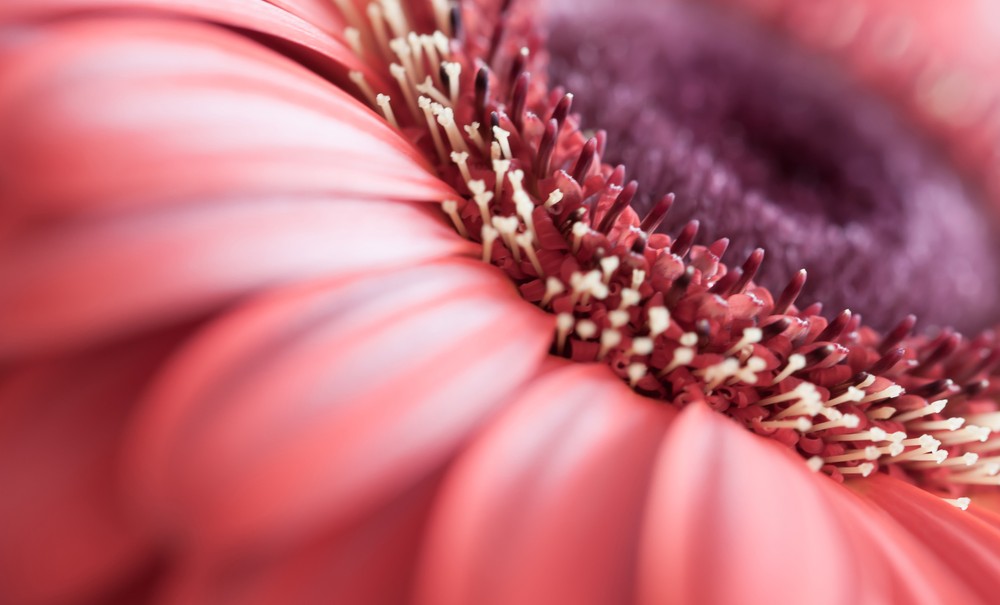
8 Flower Photography Tips To Make Your Photographs Bloom
Flowers may be one of the most commonly photographed items, and yet there’s still the occasional shot of a blossom that offers the wow factor. How do you take a flower photo that’s not just another photo, but that stands out from the rest? By highlighting each flower’s shape and colour, and using a few macro photography techniques, you can take photos that really blossom. Here are the best flower photography tips for capturing that stand-out shot.
Be patient
You’ll capture better shots of flowers simply by waiting for the right moment. The weather plays a big role in outdoor macro photography shots. A cloudy day offers nice, even light that’s easy for even beginning photographers to work with. Shooting just after a rainstorm means nice water droplets on the photos, and foliage tends to have darker, more saturated colour when wet. Avoid windy days though, as the flowers need to stay still to get a sharp shot.
The time of day matters too. About an hour before sunset, the light is a nice soft glow. While cloudy days make it easy to get a good flower photo, shooting shortly before sunset or shortly after sunrise allows for different backlighting effects.
Steady your shot
 The closer you are to an object, the more you’ll notice even the tiniest bit of camera shake. To get pin-sharp images, use a tripod. A tripod that reaches a low minimum height is a good investment for photographers that enjoy macro photography as well as other subjects, but a tabletop tripod is often sufficient for flower photography as well.
The closer you are to an object, the more you’ll notice even the tiniest bit of camera shake. To get pin-sharp images, use a tripod. A tripod that reaches a low minimum height is a good investment for photographers that enjoy macro photography as well as other subjects, but a tabletop tripod is often sufficient for flower photography as well.
To ward off camera shake even more, use the timer feature on your camera. The motion of pressing the shutter while the camera is mounted on the tripod can also introduce camera shake. Using a timer prevents that. Or, you could also get a remote release. Many wi-fi equipped cameras can also use a smartphone or a tablet as a remote release.
Use single point autofocus, or try manual
When getting up close on a single flower, choosing your focus point is essential. Do you focus on the center? The folds of the petals? The decision is up to you and what you’re envisioning, but you’ll need to know how to get the focus just how you are envisioning. You can try using manual focus,which works well for many macro shots. Take a few different shots, since it’s hard to tell if you have it fully in focus using just the viewfinder.
Single point autofocus also often works well for macro photography. This focus mode allows you to choose what part of the image to focus on by moving the focus box with the arrow keys (or using the touchscreen if your camera has one). It’s a simple switch you can make by just opening the camera’s menu or using your camera’s focus shortcut if there is one. However simple, it makes a big impact in getting the right portion of the shot sharp.
 Look for backlighting
Look for backlighting
Flowers shot with backlighting just glow, literally. The thin petals, when there is light coming from behind them, will actually appear to light up. That makes backlighting a great technique to use with flowers.
To use backlighting, you need to position the camera so the sun is coming in from behind the flower. To get the sun low enough in the sky to do this, you’ll need to shoot early in the morning or towards the end of the day. You’ll also need to set your camera to spot metering, otherwise the flower will look like a silhouette. Using full manual mode, instead of just aperture priority, is also helpful for getting backlighting just right.
Watch your depth of field
 Most of the time, images of a single flower are best with a soft background, so that other items in the scene don’t take attention away from the flower. To get that out-of-focus background, shoot in aperture priority or manual mode and use a low f-number.
Most of the time, images of a single flower are best with a soft background, so that other items in the scene don’t take attention away from the flower. To get that out-of-focus background, shoot in aperture priority or manual mode and use a low f-number.
Don’t be tempted to use the lowest f-number your macro lens offers though. Distance affects depth of field, or how soft that background is, too. An f/1.8 or f/2.8 is often too much, leaving even most of the flower out of focus. Use the depth of field preview button on your camera, or take a test shot and zoom in on the shot in your LCD screen to see how sharp it is. Usually a few clicks from the widest aperture offers a sharper subject while still getting plenty of blur to the background.
Try a new perspective
Most people automatically take flower photos just how they see them. But to take flower photos that really stand out, you’ll need to change your perspective. First, you’ll need to get down on the flower’s level. Yes, this usually means kneeling or even laying in the dirt.
But along with getting down to the flower’s level, look for other perspectives too. Sometimes, the back of the flower where the stem connects to the petals is just as photogenic as the front. Shooting from beneath the flower, looking up at it, is also often a great perspective that makes the flower feel more powerful.
Borrow tips from portrait photography
The best flower photos feel more like flower portraits. They make something as simple as a blossom appear to have its own personality. How do you do that? Borrow tips from portrait photography. You can’t pose a flower, but you can identify what it is that you like most about that particular flower, such as the shape, the colour, or the lines of the petals. Identify that feature and work your shot to highlight that one thing.
Just like in a portrait, it’s also good to use a single point autofocus and a wider aperture to blur the background. You should make sure your perspective highlight’s the flowers best features. Just like in portrait photography, backlighting can be particularly flattering.
Keep it simple
 There’s a lot to consider when photographing a flower, but don’t get too caught up in following every tip and composition rule to a T. Flower pictures, just like other types of macro photography, are best kept simple.
There’s a lot to consider when photographing a flower, but don’t get too caught up in following every tip and composition rule to a T. Flower pictures, just like other types of macro photography, are best kept simple.
Watch your background for distracting elements and adjust your perspective or use a wider aperture to blur them out. Don’t try to put several techniques into one shot. A flower with water droplets and a bumblebee and backlighting and a low angle is too much. Simpler shots work best.
Flowers make great subjects. Their variety of shapes, colours and textures means endless opportunities for great photographs. Incorporate a few flower photography tips as you shoot, like using a tripod and single point autofocus. Be sure to be patient for the right shooting conditions, and remember to keep it simple.
Looking to sharpen your photography skills? Join our top-rated professional photography course today!



